Minecraft offers many jobs, but thankfully, most can be assigned to villagers through various jobs, which we will detail in this guide.
By assigning jobs to villagers, you can focus on exploring your Minecraft world and purchasing high-end gear at your base instead of mining for crafting supplies.
This also gives you more time to explore the new features coming in Minecraft 1.21.
Keep reading to learn more about all Minecraft villager jobs!
All Minecraft Villagers Jobs Explained: Types, Job blocks
Let’s take a look at all the Minecraft villager jobs in detail.
| Villager Profession | Job Site Block |
|---|---|
| Armorer | Blast Furnace |
| Butcher | Smoker |
| Cartographer | Cartography Table |
| Cleric | Brewing Stand |
| Farmer | Composter |
| Fisherman | Barrel |
| Fletcher | Fletching Table |
| Leatherworker | Cauldron |
| Librarian | Lectern |
| Mason (Stonemason) | Stonecutter |
| Shepherd | Loom |
| Toolsmith | Smithing Table |
| Weaponsmith | Grindstone |
| Unemployed | None |
| Nitwit | None |
Notes:
- Unemployed Villagers: These villagers do not have a job until they are assigned one by placing a job site block nearby.
- Nitwits: These villagers cannot take on any profession and remain jobless.
1. Cartographer
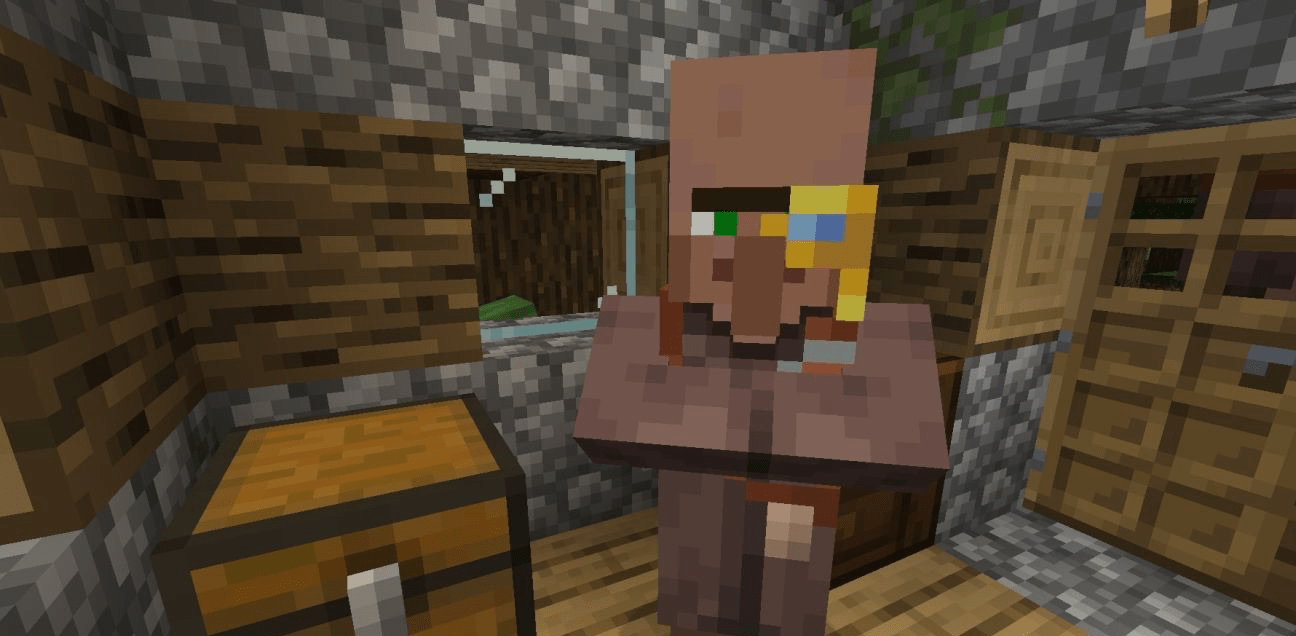
Cartographers can be among the priciest villagers, but their services are invaluable. They offer empty maps, frames, banners, and special maps that reveal the locations of ocean monuments, woodland mansions, and buried treasures. Their job block is the cartography table, used to create maps.
2. Armorer
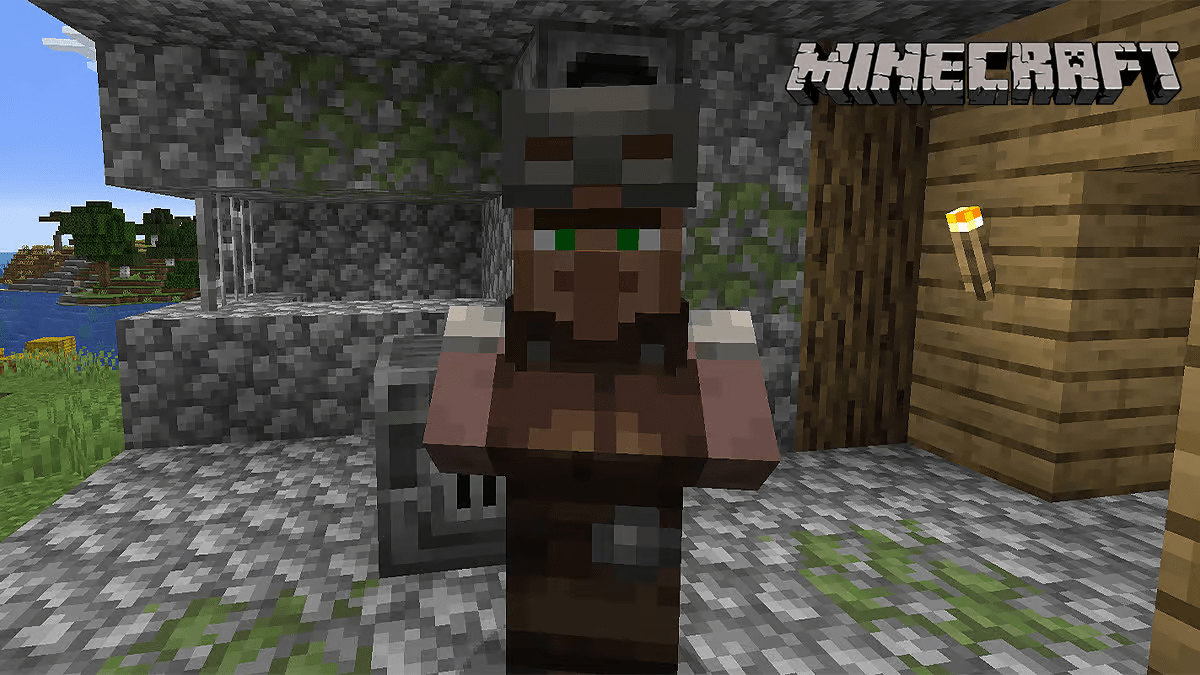
Armorers, whose job site block is the blast furnace, trade armor pieces, bells, and shields. Expert-level armorers even offer enchanted diamond armor.
3. Butcher
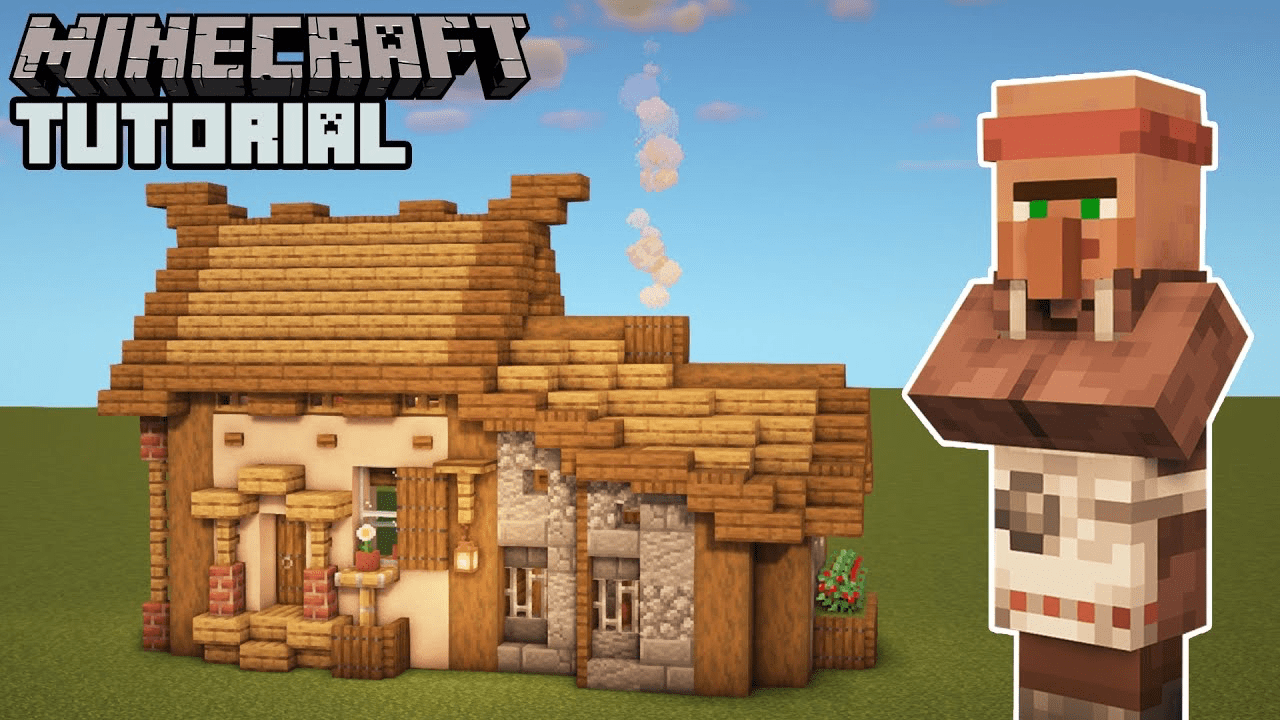
Butchers, found across all biomes, provide cooked meats and rabbit stew. They often trade eight cooked chicken pieces for one emerald. Their job block is the smoker, which cooks meat faster than a regular furnace.
Another distinctive feature of butchers is their job block, known as the smoker. This specialized tool enables them to cook meat at an accelerated rate compared to a regular furnace. As a result, players can efficiently obtain cooked meats by interacting with butchers and utilizing their services.
4. Farmer
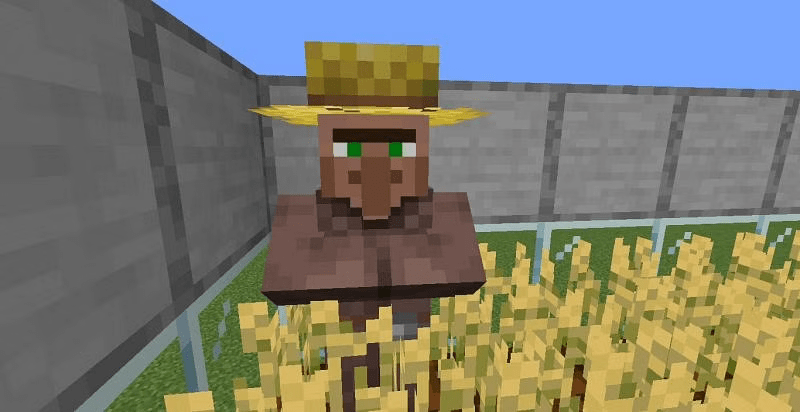
Farmers are the most common villagers, offering various food items and ingredients for potions. They trade bread, pie, apples, cookies, cake, stew, golden carrots, and glistering melon slices. Their job block is the composter, which is useful for creating bone meal.
5. Fletcher
Fletchers, less known but very useful for players with good aim, trade arrows, flint, bows, and crossbows. Higher-level fletchers offer enchanted bows, crossbows, and tipped arrows.
What’s more, higher-level fletchers can provide enchanted bows, crossbows, and tipped arrows, which can be essential for advanced gameplay. Their job block is the fletching table, which, at the moment, does not offer any additional functionality.
6. Cleric
Clerics are capable of exchanging a variety of rare magical items, including Redstone dust, lapis lazuli, glowstone, ender pearls, and Bottle o’ Enchanting. These valuable items can be acquired through the use of a brewing stand, offering players the opportunity to obtain unique and powerful resources through interaction with the cleric profession.
7. Leatherworker
Once popular, leatherworkers now mostly offer leather armor and horse armor, which are less useful to most players.
They can provide horse saddles at higher levels. Their job block is the cauldron, used for storing water, lava, powder snow, dyed water, and potions (in the Bedrock edition).
8. Nitwit
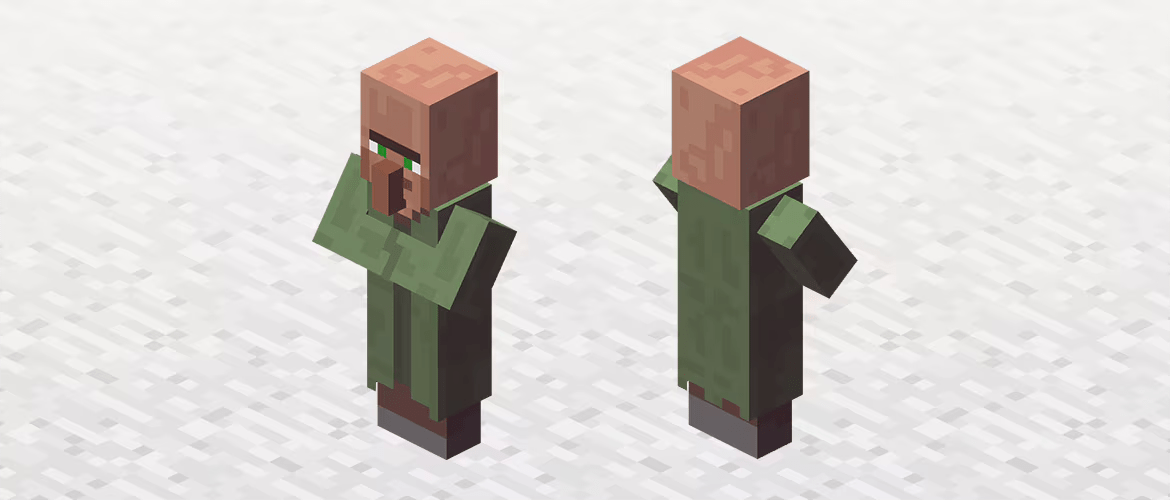
Nitwits are useless for trading or jobs. They serve as a reminder of Minecraft’s aesthetic value, unlike the unemployed villagers who can be assigned jobs.
9. Shepherd

Shepherds focus on decorative items like carpets, colored wool, banners, and paintings. They also trade shears and beds. Their job block, the loom, creates unique banner patterns.
10. Weaponsmith
Weaponsmiths offer valuable trades, including swords and axes, with or without enchantments. Their job block, the grindstone, repairs tools and removes enchantments.
11. Fisherman
In the world of Minecraft, “fishermen” is a profession that is often chosen by new players. These fishermen trade in a variety of items, including cooked fish, a bucket of cod, campfires, and enchanted fishing rods. They perform their tasks using a job block known as a barrel, which is especially useful for storage purposes.
12. Unemployed
Unemployed villagers can be assigned jobs by placing the required utility block nearby. This can change if their current job block is broken, allowing reassignment until they’ve been traded.
13. Librarian
Librarians are crucial for obtaining enchanted books and also trade bookshelves, lanterns, glass blocks, clocks, compasses, and name tags.
Their job block is the lectern, useful in multiplayer and as a Redstone component.
14. Toolsmith

Toolsmiths trade various tools, including axes, pickaxes, shovels, and hoes, often with enchantments. Their job block, the smithing table, upgrades diamond tools to netherite tools and armor.
15. Mason or Stone Mason
Masons (Java edition) or stonemasons (Bedrock edition) trade various stones, bricks, terracotta, and quartz. Their job block, the stonecutter, crafts stone blocks in different sizes.
Bonus: Wandering Trader
Wandering traders are not technically villagers since they do not spawn within villages. However, they resemble villagers and offer trades for unique items.
Unlike villagers who have specific trades, wandering traders provide a random assortment of items, ranging from packed ice to flowers.
You cannot convert a regular villager into a wandering trader, nor can you manually spawn one. They appear randomly near the player, accompanied by two leashed trader llamas, after one in-game day.
They can spawn anywhere within a 48-block radius of your location. Keep an eye out, as they will eventually despawn, making their trades temporary.
How Villagers Obtain Jobs in Minecraft
Villagers receive their professions based on the type of utility block nearby, also called job site blocks.
For instance, a villager near a composter will become a farmer. However, due to the limited availability of these blocks, many villagers remain jobless.
If you want to assign a specific job to an unemployed villager, you can craft and place the appropriate utility block next to them.
This action will automatically assign the villager to the corresponding profession, allowing you to trade for unique items.
Recently, there has been much discussion about villagers, and Mojang is planning to update their trades.
This especially affects librarians, armorers, and cartographers. You can test these upcoming changes by enabling the “Villager Trade Rebalance” experimental features in the Java edition or “Villager Trade Rebalancing” in the Bedrock edition when creating a new world.
The primary change will involve biomes influencing villager trades. Librarians will continue to trade enchanted books, but the specific enchantments will depend on the biome.
Frequently Asked Questions
How many villager jobs are there in Minecraft?
There are around 15 villager jobs, including the ‘Unemployed’ and ‘Nitwit’ categories, which bring the total to 13 functional jobs: Armorer, Butcher, Cartographer, Cleric, Farmer, Fisherman, Fletcher, Leatherworker, Librarian, Mason, Shepherd, Toolsmith, and Weaponsmith.
Can You Change a Wandering Trader’s Profession?
No. Wandering Traders roam the Minecraft world and occasionally appear near your home, offering various trades. However, they operate independently from village villagers. Therefore, you cannot change a Wandering Trader’s profession within Minecraft, as their role is not one of the 13 assigned through job site blocks.
What is the Most Useful Villager in Minecraft?
The most valuable villager for trading is the Librarian, who appears when a lectern is present in a village. Librarians specialize in Enchanted Books and can offer any enchantment at any level from the start.
What is the Best Way to Use Villagers in Minecraft?
Villagers are an excellent resource for obtaining supplies that might otherwise be hard to acquire. By trading with villagers, you can level them up, resulting in better items for trade. While all villagers accept emeralds, they also accept items related to their specific professions.
Is It Rare to Find a Mending Villager?
Yes. Finding a mending villager randomly is extremely unlikely due to the scarcity of natural swamp villages. You might need to create multiple new worlds to come across a natural swamp village, and even then, there’s no guarantee that you’ll find a mending villager there.
In a Nutshell
In conclusion, understanding the diverse roles of villagers in Minecraft can greatly enhance your gameplay experience.
By assigning jobs through specific utility blocks, you can delegate many tasks to villagers, freeing up your time for exploration and other pursuits.
From Cartographers who provide valuable maps to Librarians offering essential enchanted books, each villager role brings unique benefits.
The recent and upcoming changes to villager trades, especially with the introduction of Minecraft 1.21, promise to add even more depth and strategy to village interactions.
Remember, while some villagers like Nitwits may seem useless, others like the Librarian are incredibly valuable for their trades.
Whether you are seeking rare items, enchanted gear, or simply efficient ways to manage resources, leveraging villager jobs is key.
Keep an eye out for Wandering Traders as well, whose random trades can occasionally offer unique items.
If you've any thoughts on Minecraft Villager Jobs: A Guide, then feel free to drop in below comment box. Also, please subscribe to our DigitBin YouTube channel for videos tutorials. Cheers!





